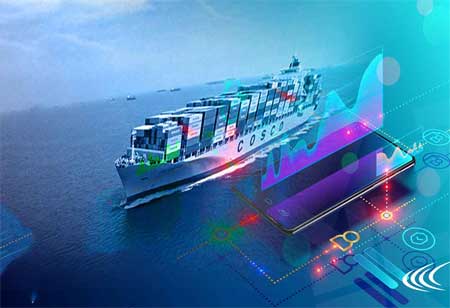THANK YOU FOR SUBSCRIBING
THANK YOU FOR SUBSCRIBING

By
Logistics Transportation Review | Friday, February 23, 2024
Stay ahead of the industry with exclusive feature stories on the top companies, expert insights and the latest news delivered straight to your inbox. Subscribe today.
The future of intra-logistics is shaped by advanced robotics, streamlining operations with automation, efficiency, and flexibility. Robotic technologies are revolutionising warehouse management, enhancing speed, accuracy, and adaptability in supply chains.
FREMONT, CA: Logistics and warehousing support the world economy by facilitating the smooth movement of commodities across borders. Though labour costs are growing and manual operations are inefficient in traditional warehouses; this calls for a seismic shift. The most recent wave of intelligent automation and robotics promises to transform intra-logistics and warehousing by streamlining processes, cutting costs, and building resilience for the future.
Intelligent automation has a huge potential to revolutionise outdated human procedures in warehouses and production facilities. The intra-logistics domain encompasses three crucial aspects that stand to benefit greatly from innovation in the supply chain landscape: inventory management, end-to-end warehouse administration, and internal material movements.
Increased Adoption of Robotics: The widespread integration of robotics is transforming warehouse operations, and optimising processes through computer-controlled algorithms. Automated storage and retrieval systems (ASRSs) improve space utilisation and order accuracy, minimising errors and operational costs. Robotic arms showcase precision in manufacturing, enhancing productivity. Autonomous mobile robots (AMR) and automated guided vehicles (AGV) represent the future of material handling, autonomously navigating and transporting goods. The convergence of ASRS, robotic arms, and AMR/AGV signifies a transformative synergy, reshaping logistics and manufacturing for heightened efficiency and adaptability.
Inventory Traceability and Visibility: Traceability and visibility of inventory are crucial components of warehouse management. It describes the capacity to monitor real-time inventory movements, levels, and transactions. By incorporating autonomous mobile robots, managers may save time and minimise human mistakes brought on by outdated manual processes, all while having exact real-time visibility. Inventory management requires accurate traceability into pallet locations and status, which automated warehouse trucks give.
Production Workflow Automation: This is the deliberate integration of assistive autonomous technologies to streamline internal supply distribution and ease cargo movement planning and monitoring, both of which lead to higher industrial productivity. This means that firms may speed up the time it takes to move goods from one location to another and improve their manufacturing processes by utilising automated warehouse vehicles. This lowers expenses and errors while also increasing production and efficiency.
Leading the way in next-generation supply chain network solutions development are automation and robotics. Strategic technological interventions can reduce logistical overheads and provide transparent, efficient operations for large, small and medium-sized enterprises.
Over the next ten years, stakeholders both large and small should prioritise preparing for automation and coordinating AI-powered intralogistics, as storage is a crucial component that keeps the wheels of both domestic and international trade going. Those who adapt early will have a long-term competitive edge. The automation revolution has truly begun with exponential advancements in robots, supply chain management software, IoT connections, and AI/ML. Tech-enabled efficiency gains in warehousing promise a bright future for businesses prepared to enter the intralogistics market 4.0.
I agree We use cookies on this website to enhance your user experience. By clicking any link on this page you are giving your consent for us to set cookies. More info





